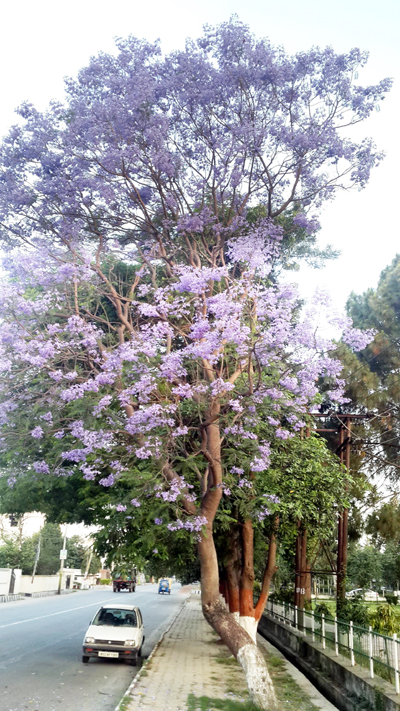Dr Sandeep Sehgal
“Dad, how does a mulberry tree looks like?” asked my elder son Yuvraj while doing his school homework. “What? I mean, you haven’t seen a Mulberry tree?” I asked. “No Dad”, came a quick reply.It was pathetic, but it was not his fault. “Where are the trees in our surroundings?, especially in the cities”, I convinced myself. Yuvraj is nine years old in fifth standard. I was also surprised as to why he asked me this question, because he generally reverts to his mother for his homework. Maybe he approached me because he thought I was the right person for this question, as I am a post graduate in Forestry. So, we decided to look out for some common trees around on the weekend. For the moment, it reminded me of my University days when I was studying Forestry at Dr Y S Parmar University of Horticulture and Forestry at Solan, Himachal Pradesh. I was not good at tree identification and struggled to identify tree species during practical examinations. Identifying trees is no rocket science and you need not necessarily have a background in taxonomy or botany. All it needs is a keen observation and a little bit of interest. The best way to identify a tree is by its flowers and the best time is spring season, which turns the job of identifying the trees into an entertaining pursuit. So, on Sunday we went out for a ride in and around the Jammu city. We took a stroll around the green belt park in Gandhi Nagar as well as the campus of the University of Jammu. Luckily we could find a number of trees in bloom. We could see purple, red, orange coloured trees. The leaves and flowers from these trees had fallen on the road and were quite conspicuous from a distance. “Dad, it seems like Rangoli on the Road!” my son exclaimed and I replied in affirmation. The colourful trees were Palash (Buteamonosperma), also known as the Flame of the Forest. Interestingly, Palash is the state flower of Jharkhand. Another tree with bright crimson flowers was Pangaar (Erythrinaindica) also called the Indian Coral Tree. Another beauty, Kadamb (Anthocephaluscadamba) looked stunning from a distance, loaded with numerous ball shaped red to orange coloured beautiful flowers. It is also called Haripriya, as it was the favourite tree of Lord Krishna. African Kakdi (Kigeliapinnata) was another unique tree with dark maroon flowers. It is also called the sausage tree or the cucumber tree because of cylindrical shaped fruits hanging down. Another tree with flamboyant vermilion coloured flowers was Gulmohar (Delonixregia) which can hardly miss your sight. Heavily laden with flowers, it can be spotted from quite a distance. Till now we had seen the trees which were mostly in the shades of red, till we came across NeeliGulmohar (Jackrandamimosifolia) a purple coloured tree. In May it gets covered with clusters of blue tubular flowers turning the groundblue and it seems as if a purple carpet has been laid out on the road. However, I like another common name given to this tree, which reminds me of late Mr Kushwant Singh. In one of his article, he mentioned the beauty of Blue Jackrandatrees where he referredto these trees as Neelam. I still remember how pendantically he described the beauty of Neelamdotting the Kalka-Shimla highway. An almost a similar scene is recreated, on the way to Dalhousie but with a different colour.
This time with yellow. It takes a bland drive of around three hours from Pathankot to reach Dalhousie. The drive to Dalhousie is quite peculiar in a way because you do not feel like going to a hill station. Being a Kandi (dryland) area, with scanty vegetation, there is no chill in the air as we move up the hill. The only thing which I found compulsive was the sight of beautiful bright yellow coloured Amaltas (Cassia fistula) trees. During May, the trees are heavily loaded with flowers maybe that’s why it’s also referred asthe golden shower tree. Meanwhile, the sun was just beginning to show its presence and it was time to pack up. While driving back home, I was thinking that there are so many trees which catch our attention during this time of the year and all we need is to move out and admire the colours of nature. As we reached home, I could see a witty smile on my son’s face. “What is that for?” I asked. “Dad, I learned a lot about the trees today, but we missed out the Mulberry tree so we have to go out again next Sunday” and all I could do was smile.
(The author is Associate Professor, Department of Agroforestry, SKUAST of Jammu)
Trending Now
E-Paper


